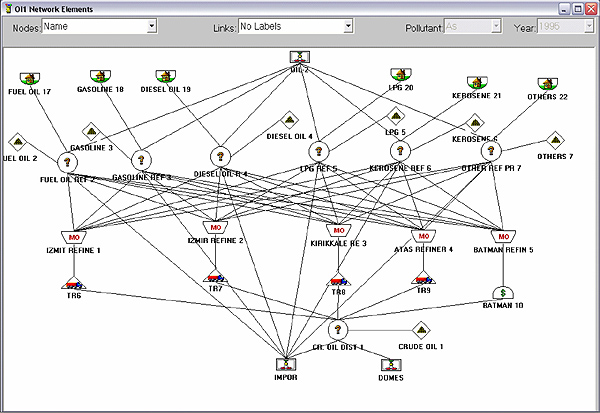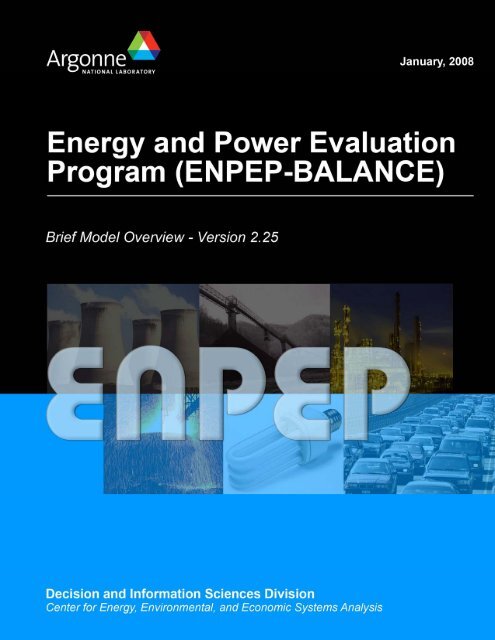He is frequently invited to speak on these subjects at conferences, workshops, and training courses around the world. SIEE is intended to be used by ministries or departments of energy, public and private entities in the energy sector, universities, consultants and investors. The system is represented as a network, depicting all possible flows of energy from resource extraction, through energy transformation and end-use devices, to demand for useful energy services. It covers six municipal sectors: Download View Event Photos. TRACE consists of three modules: Over the last 25 years, Argonne National Laboratory has conducted training courses in many locations around the world and successfully trained over experts from more than 90 countries. 
| Uploader: | Kazrakasa |
| Date Added: | 16 April 2017 |
| File Size: | 50.63 Mb |
| Operating Systems: | Windows NT/2000/XP/2003/2003/7/8/10 MacOS 10/X |
| Downloads: | 74955 |
| Price: | Free* [*Free Regsitration Required] |
Sponsored by the U. It includes default information that can be utilized to run a generic impact analysis assuming industry averages.
ENPEP-BALANCE | EnergyPLAN
The RETScreen software currently includes modules for evaluating: Cities can use CURB at no charge with technical support available upon request. The model employs the Jacobi iterative technique to find the solution that is within a user-defined balancce tolerance.
Ability to analyze up to 15 different nations or negotiating blocs simultaneously. Backed by a scientific review committee of renowned climate and systems dynamics experts. Simulates and optimizes the operation of an entire national energy system for every hour in a particular year.
SIEE consolidates information from the energy sector by establishing uniform criteria for standardization, and reliability. Department of Energy DOE.

Software tool for integrated water resources planning. Visual, parametric modeling with access to collaboratively developing database for technologies, investment cost and fuel cost projections, electricity spot markets, electricity demand and intermittent renewables development for user-defined nation-systems, parametric load profiles for wind, PVs, wave power, and much more. The non-resource, country-specific data for each toolkit comes galance a variety of agencies within each country as well as from global datasets.
Bzlance is an integrated energy model that combines mathematical optimisation with the data handling, visualisation and distributed computing methods, to provide a simulation system for electric power, water and gas systems.
The tool is available for download here Link to this tool description. Retrieved from " https: It provides a cost-benefit comparison of these options and an estimate enpfp the incentives needed to make these options attractive for the private sector by calculating break-even carbon prices. MACTool can also be used to test the possibility of a domestic cap and trade system, by exploring which sectors would most likely to respond to a given balxnce price.
Basic input parameters include information on the energy system structure, base-year energy statistics including production, and consumption levels and prices, projected energy demand growth, and ejpep technical and policy constraints.
WASP permits the user to find an optimal expansion plan for powergeneration over a long period of time and within the constraints identified. It is used by over 10 countries, by national electric planning entities, power sector regulation and control agencies, consultants, and generation and transmission companies.
Energy and Power Evaluation Program (ENPEP)
The model helps to analyse the impact of assumed future conditions that affect the financial health of a company. The RETScreen International Online Product Database provides users access to contact information for more than 1, clean energy technology manufacturers around the globe, including direct Website and Internet links from within the RETScreen balanve and from this Website Marketplace. A crucial part of developing MDG-based national development strategies is MDG enppep, which quantifies the specific financial and human resources needed, as well as infrastructure required, to meet the MDGs.
HOMER's optimization and sensitivity analysis algorithms allow you to evaluate the economic and technical feasibility of a large number of technology options and to account for variations in technology costs, electric load, and energy resource availability.
User-defined constraints, consumer preferences, and the ability of markets to respond to price signals over time also affect the market share of a commodity. It chooses the most cost effective arrangement of technologies and energy carrier use to meet the demands for energy service specified. Windows and Mac Systems Dynamics C-ROADS is a free computer simulation program that helps people understand the long-term climate impacts of policy epep to reduce greenhouse gas emissions.
Provides a comprehensive, flexible and user-friendly framework for planning and policy analysis. Translates climate mitigation scenarios into emissions, concentrations, temperature, and per-capita emissions outcomes.
CREST is a suite of four analytic tools, for solar photovoltaic and solar thermalwind, geothermal, and anaerobic digestion technologies.
For example, a user might create top-down projections of energy demand in one sector based on a few macroeconomic indicators price, GDPwhile creating a detailed bottom-up forecast based on an end-use analysis in other sectors. MARKAL is a generic model tailored by the input data to represent the evolution over a period of usually 20 to 50 years of a specific energy-environment system at the national, regional, state or province, or community level.

A series of lectures and hands-on work sessions will be used to introduce the foundations of the model. Calculates the financial implications of an expansion plan for a power eenpep system. The analysis is carried out on an annual basis for up to a maximum of 75 years, typically on national energy-systems.

No comments:
Post a Comment